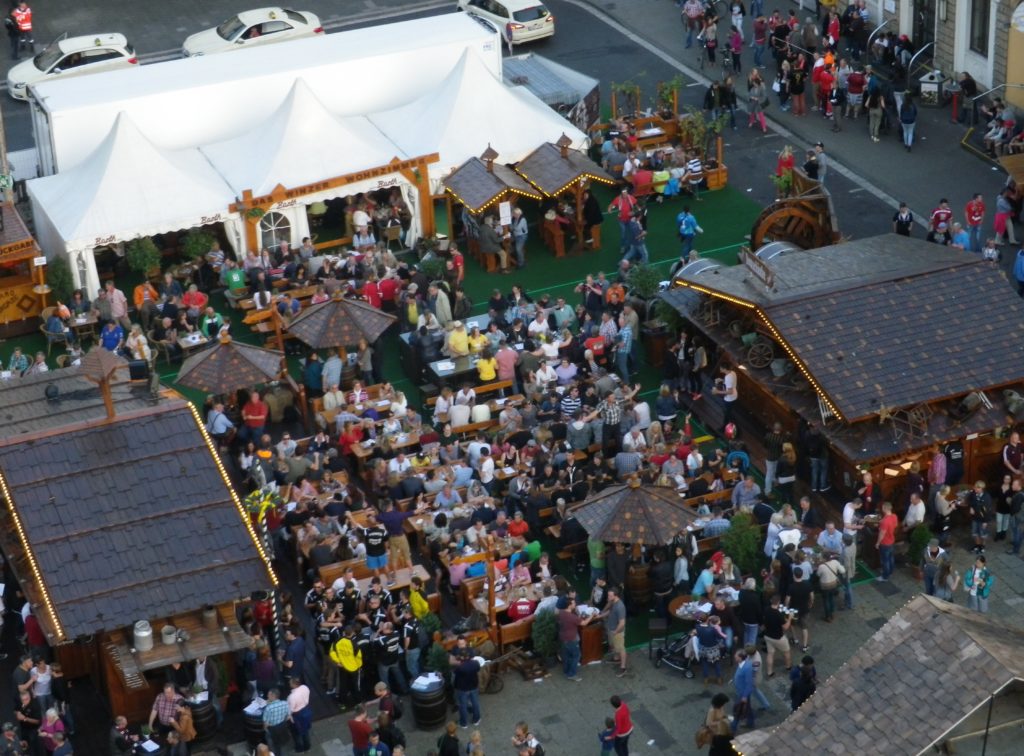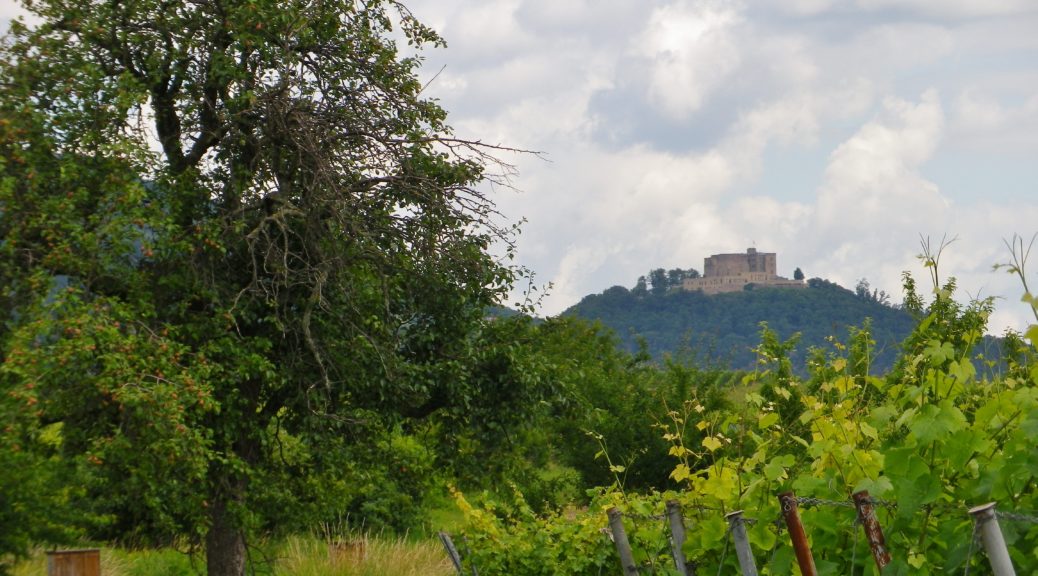The Rhineland Palatinate’s Suedliche Weinstrasse wine district has long had a multi-faceted approach to its wine-making and wine tourism. From cooperatives to independent wine makers, from car routes to hiking and biking trails through the vineyards and towns where the production of wine takes place. These are not one-off trails. Rather they have been well-thought out, and are mutually supportive. One bicycle circuit I recently completed demonstrates these characteristics.
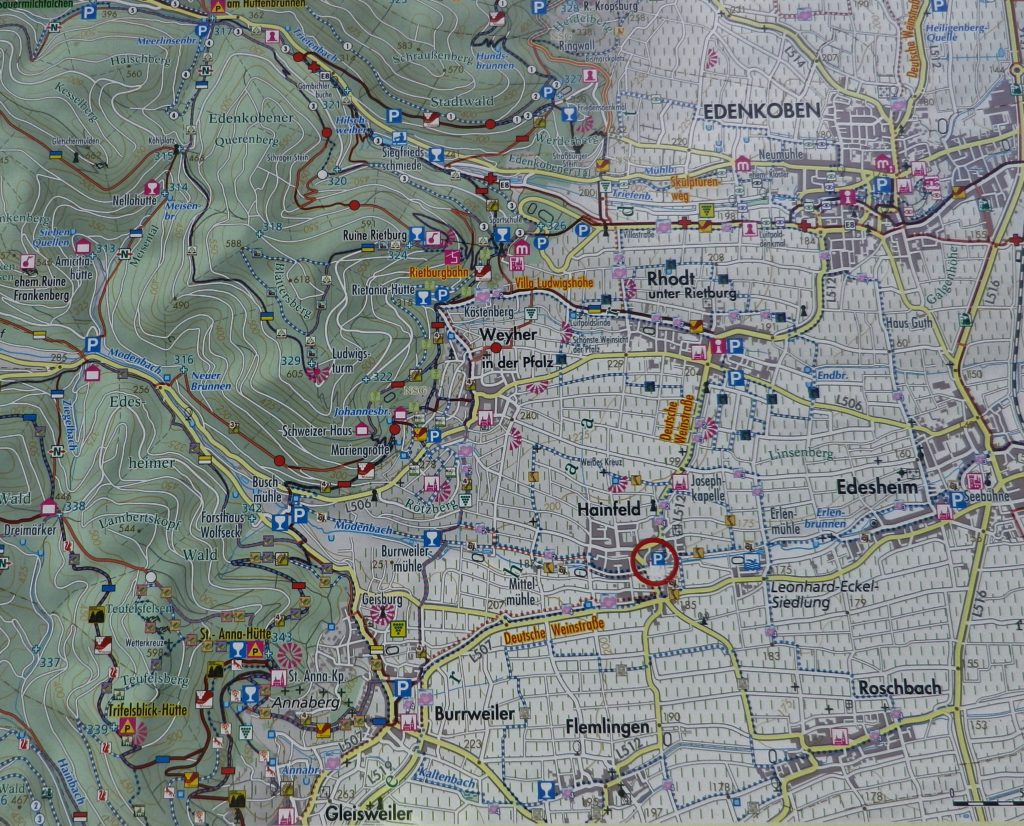
The circuit was named Fassboden (Barrel-Land) 6. Like Fassboden 5, which I cycled previously, it promotes wine tourism in Suedliche Weinstrasse wine district. This one shares a contiguous sector with Fassboden 5, yet it covers some different territory as well. It began in Sankt Martin, one of my favorite villages in this district, nestled as it is at the bottom of an impressive mountain, in a hollow. Its narrow roads and trails lead down to the valley below. This trail headed south through vineyards to Edenkoben, where it met up with Fassboden 5. But from Edenkoben, instead of visiting points south, Fassboden 6 headed across the flat lands to Venningen and Kirrweiler.
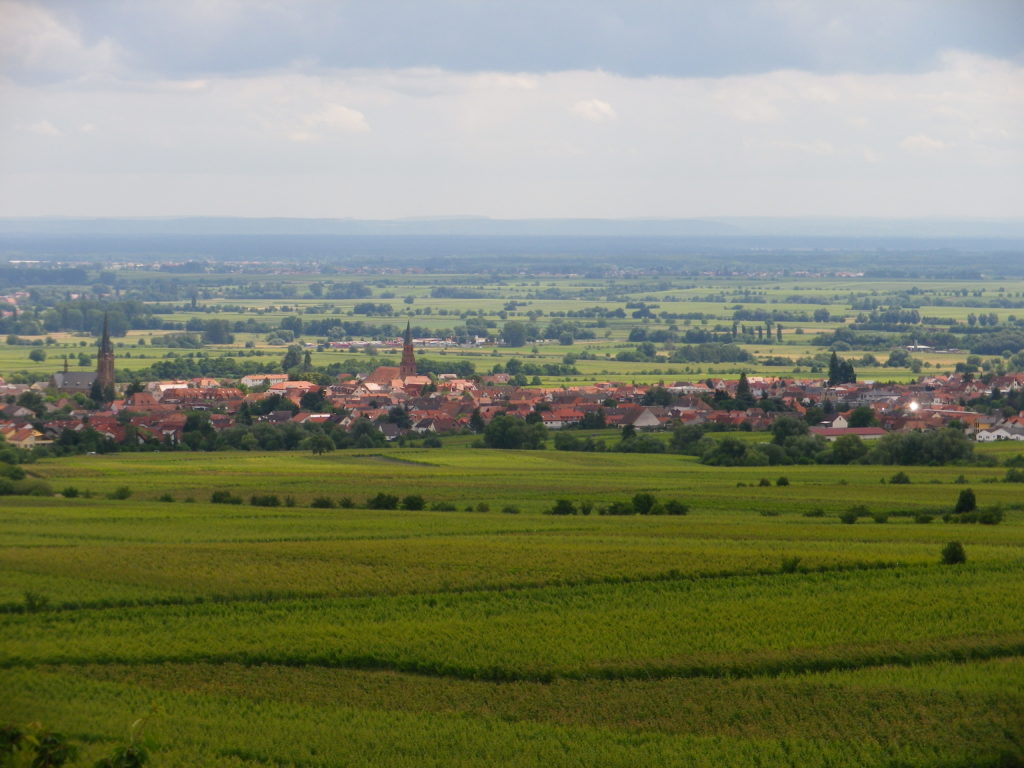
The trail also went through Maikammer, another delightful small town on the Deutsche Weinstrasse route I have visited previously. As with Fassboden 6, the towns and villages along the trail form part of a larger hiking, biking or car route system. Hence, there are several ways to visit these wine-making villages and towns. In fact, one of my first postings about this district was about one of the first touring routes ever: The Deutsche Weinstrasse. Originally a car route stretching from the French border to Bockenheim, just west of Worms, nowadays there is a hiking trail and a bicycle route both of which cover many of the same towns.
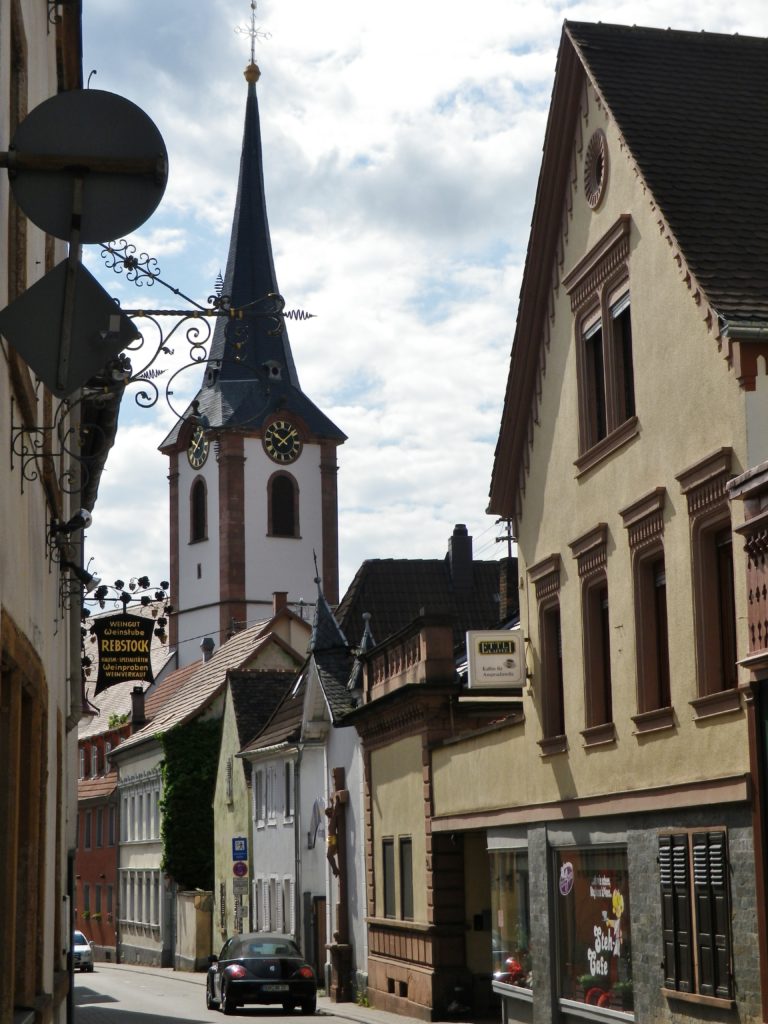
In fact, visiting these places by bicycle is perhaps the best way to see them. It is certainly one of the least frustrating ways. Driving can be problematic in these places with narrow, one way streets, and (usually) limited parking. Hiking or biking to and through them is much more pleasant.
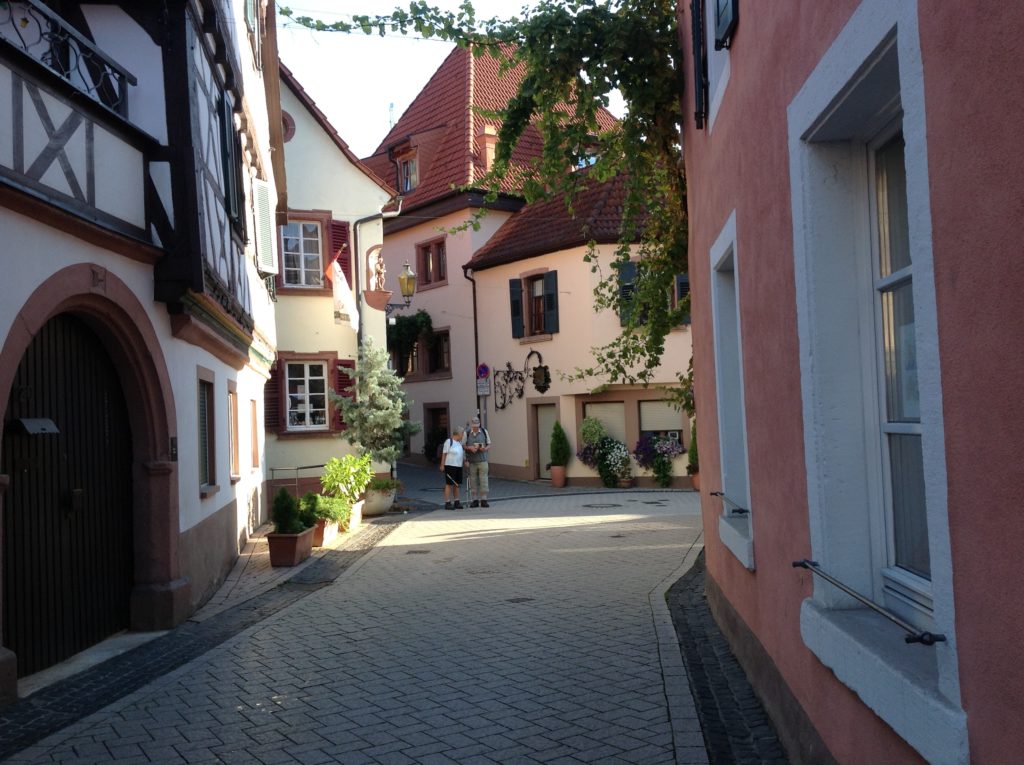
Biking is especially nice when these towns have wine festivals, which is often in the summer and early fall. This district can be like party central. The festivals in Maikammer, Sankt Martin, Edenkoben on the Fassboden 6 route, and Rhodt unter Rietburg and Gleisweiler on Fassboden 5 route, are particularly well-known. As I neared the end of this biking circuit, I saw the first of several chartered buses stop to disgorge its complement of party goers. Most of the buses (and passengers) were from towns within a 50-mile radius, meaning that the event is particularly favored by citizens elsewhere in the state!
Wine festivals are part of the culture of wine here. Most of the wine-making towns along the Deutsche Weinstrasse have at least one. Some, like the ones mentioned above have a few throughout the year. In consequence, it is possible to find a wine festival any weekend between May and November somewhere along the Deutsche Weinstrasse. While they all have wine drinking in common, they can be quite different in other respects. Rhodt unter Rietburg’s setting for its fest, under the stately old trees lining its incomparable “Allee”, is a favorite. Weyher’s always seems to have great atmosphere. Gleisweiler’s combines art with wine, which is particularly appropriate in that picturesque town. The larger towns, such as Bad Duerkheim and Neustadt an der Weinstrasse, are famous for huge festivals that are more carnival like in atmosphere and design.
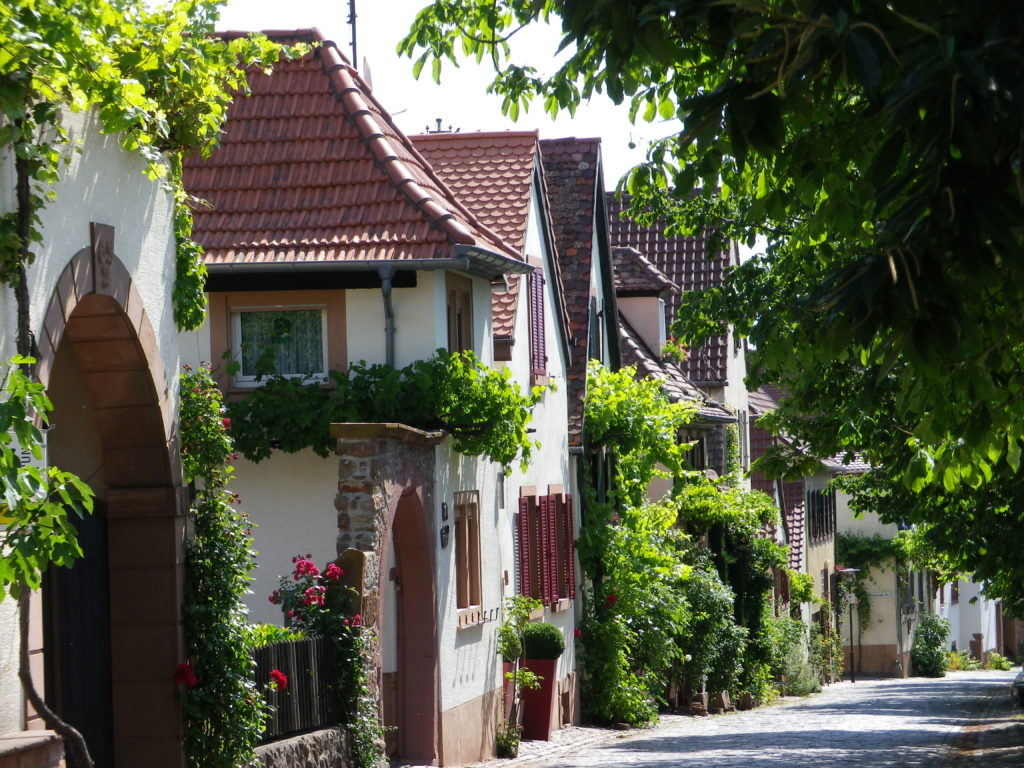
A small wine festival was in full swing when I was there. So, once I had completed the circuit, I joined some friends for the fun in the heart of the village. Another great way to end a trail!
